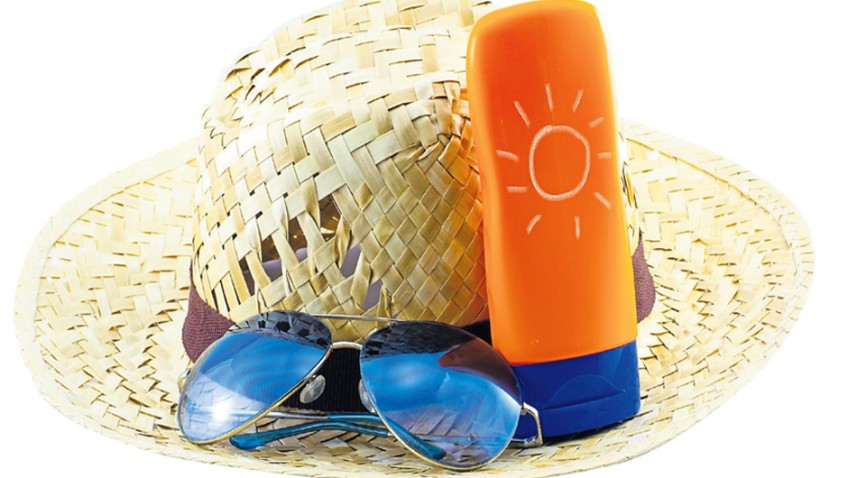By now we should all have heard the message about sunburn and skin cancer but it seems that many of us still consider a suntan gives us a healthy glow and spend time and money trying to acquire a golden tan.
Whatever your age it is important to avoid sunburn which can lead to skin cancers. Avoid the sun at its most intense.
- Spend time in the shade between 11am and 3pm
- Wear a T shirt, hat and sunglasses
- Use sunscreen with at least Sun Protection Factor 15 (SPF 15), the higher the better, with good Ultra Violet A (UVA) protection (the more stars the better)
People most at risk of developing skin cancer include those who have:
- Fair skin
- Lots of moles or freckles
- Red or fair hair
- Had skin cancer before
- A family history of skin cancer
Spending time in the shade
One of the best ways to protect your skin from the sun’s UV rays is to spend some time in the shade when the sun is strong. During the UK summer, the sun’s UV rays are usually strongest during the middle of the day. It’s important to be especially careful about protecting your skin from sunburn during these hours. Trees, umbrellas, canopies or buildings can all provide shade and help you protect your skin.
Covering up in the sun
If there’s no shade, the best way to protect your skin is with clothing. At least wear a T shirt, hat and sunglasses. Remember that the sun will reflect from the surface of water. So you can still burn if you are in or near water.
The amount of protection you get from your clothes varies depending on the type of material. The closer the weave of the fabric, the more likely it is to keep the sun off. Thin, loose weave fabrics such as cheesecloth give very little protection. Close weave cotton (T shirt material) gives quite good protection. When some fabrics get wet they can stretch and allow more UV rays through to your skin.
Wear a hat with a wide brim for the best protection.
Don’t forget to protect your eyes. Wear good quality, wraparound sunglasses which stop the sun from getting in at the sides.
Sunscreens
Sunscreens can be useful for protecting our skin from the sun’s rays. But they will not protect us completely from sun damage on their own. This is why it is recommended to use sunscreens together with shade or clothing to avoid getting sunburn. You should never use sunscreen in order to spend longer in the sun.
Choose a sunscreen that has good protection against UVA rays as well as a high SPF. This is because both UVB and UVA rays can cause skin cancer.
It is very important that you put on sunscreen generously and regularly.
Do check the use by date. Most sunscreens have a shelf life of 2 to 3 years, and will last about 12 to 18 months after opening. So it is usually fine to use last year’s, but not a bottle from 5 years ago!
You should put your sunscreen on before you go out in the sun so the cream can be absorbed. Then put on another layer to make sure you haven’t missed any bits. To get the level of protection stated on the bottle, you need to put enough on. For an average sized adult, you will need about two teaspoonsful for your head, neck and arms, or two tablespoons if you are wearing a swimsuit.
If you are outdoors in strong sun, you also need to apply sunscreen regularly. It is easily rubbed, washed or sweated off, so also reapply after showering, changing clothes or swimming – even if your product says it is ‘waterproof’.
Vitamin D and the sun
We all need some sunshine to make enough vitamin D to build and maintain strong bones. But it is not possible to give a one size fits all recommendation on how much sun is needed, as this depends on a number of different factors. Enjoying the sun safely, while taking care not to burn, should help most people get a good balance. You do not need to sunbathe and should not have to redden or burn your skin to make enough vitamin D. And spending longer in the sun won’t help you make more. Once you have healthy levels of Vitamin D, the body just gets rid of any extra.
Checking for skin cancers
It is important that you make a habit of checking your own skin for any changes. This is especially important if you are at a high risk of getting skin cancer or have had treatment for a previous skin cancer. If you find any changes in your skin that happen over a few weeks or months you should get your GP to look at them.
Please don’t think you have heard it all before: it is such an important message that it needs repeating every summer.
To find out more visit www.cancerresearchuk.org/about-cancer or telephone 0808 800 4040





